Old Mission San Juan Bautista
To visit Old Mission San Juan Bautista is to step back into the California of years ago. Founded in 1797, the church, granary, barracks, homes and monastery formed a cluster of "history" which still exists today. The village of San Juan Bautista is thought by some to be a monument to the rich culture of California's Spanish and Mexican heritage.
As part of the master plan of Fr. Junipero Serra to locate the missions a day's walking distance apart, a site was chosen not far from the San Benito River called Popeloutchom by the Indians. Plenty of timber was nearby including redwood at the Chittenden Pass. Important to the padres, were the rancherias in the area plus the lush San Juan Valley with herds of antelope and possibilities for orchards, planting grain and cattle grazing lands. And so it began.
In 1823 it is recorded the Mission population reached its peak with over 1200 residents and at least 22 dwellings of adobe and tile. Reportedly cattle numbered 6500 with over 700 horses and sheep grazing to the east and northeast. (Note: SJB 2009 official population totaled 1700, no total on cattle, horses or sheep) Water flowed from Gavilan springs through the Mission irrigating the garden, vineyard and corn field. In 1834 secularization of the California Missions resulted in land divided into large grants to Californians. San Juan Mission retained much of its lands and is the only one of the 24 California missions never to be without a pastor in residence. It is California's largest ongoing functioning Mission with services being held daily. It is the only California Mission to retain its large original "plaza". Student class tours are conducted throughout each year, and the Mission was featured prominently in the 1958 Alfred Hitchcock film "Vertigo". Having survived numerous earthquakes, the 1906 quake toppled walls of the church and out buildings. Renovation soon began with steel, concrete and crossbracing and today is stronger than ever.
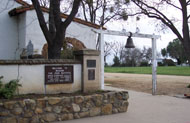 |
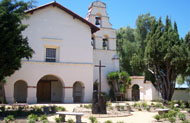 |
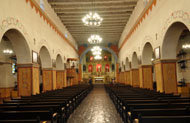 |
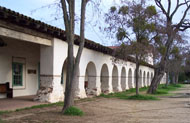 |
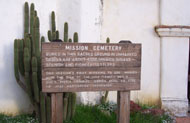 |
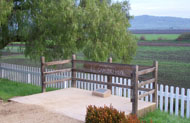 |
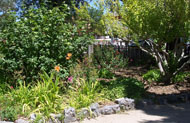 |
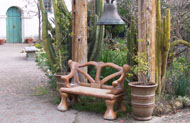 |
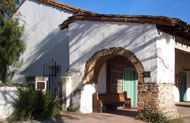 |
Photo credit Old Mission interior Kathy Schipper
![]()
Historic San Juan Bautista
Incorporated in 1869, the general law City of San Juan Bautista is nestled in the heart of fertile San Juan Valley between the Gabilan Mountains and Flint Hills. Rich with culture and history from the Mission and Rancho eras, San Juan Bautista offers its residents and visitors a refreshing small town atmosphere filled with charm and character of the past. For many it is a quaint, sleepy village with a quiet ambience rarely seen in today's hectic fast-paced world.
One cannot overlook that San Juan began as a Mission community in 1797 under Spanish rule. The Mutsun Indians were here long before, and they became part of the Mission community which grew in numbers to 1100 by 1805. By 1812 population fell to less than half due to disease, death and desertions. However, during 1823 population grew again with inhabitants coming from inland valleys and military. Livestock, timber and crops flourished. After Mexico's independence from Spain, secularization in 1834 separated Mission lands into Ranchos and San Juan Bautista became a pueblo settlement amidst much activity with military headquarters into the 1840's. The Rancho years were filled Mission fiestas, drawing vaqueros and families from the prosperous outlying Ranchos. Mid 1840's many immigrants were arriving in California, military confrontations continued, war between Mexico and U.S. ultimately resulted in treaty signing, ending hostilities between U.S. and the Californians.
In 1846 the ill-fated Donner Party immigrating from the East, brought the surviving Breen family to settle in San Juan Bautista, known as the first anglos in residence. In 1848 gold was discovered in the Sierra foothills bringing more immigrants West to settle. San Juan was a hub of activity with businesses, hotels, restaurants, stage line service between San Francisco and Los Angeles plus and occasional legendary outlaw appearance. San Juan was a primary trade center for a wide area of cattle and sheep ranches. In 1876 progress brought the railroad which bypassed San Juan Bautista, and the little town's boom years were over.
Today San Juan Bautista the "City of History" welcomes travellers, shoppers, historians, school groups and a myriad of individuals from all parts of the world interested in Mission history, architecture, unique shops and galleries, fine food, antiques, festivals, street fairs and stage theater. Longing for a glimpse and feel of days gone by? Visit the City of History, take a leisurely walk back in time, relax and sit a spell.
Of Note: San Juan Bautista....National Registry of Historic Places; Preserve America Community; National Park Cultural Services; and the DeAnza Trail.
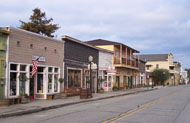 |
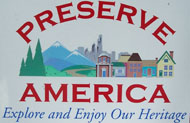 |
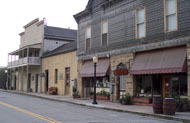 |
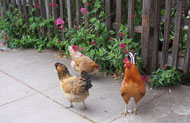 |
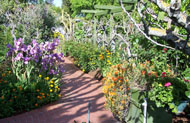 |
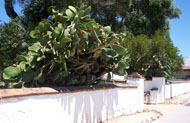 |
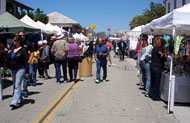 |
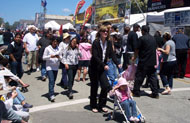 |
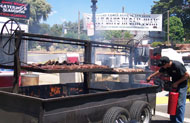 |




